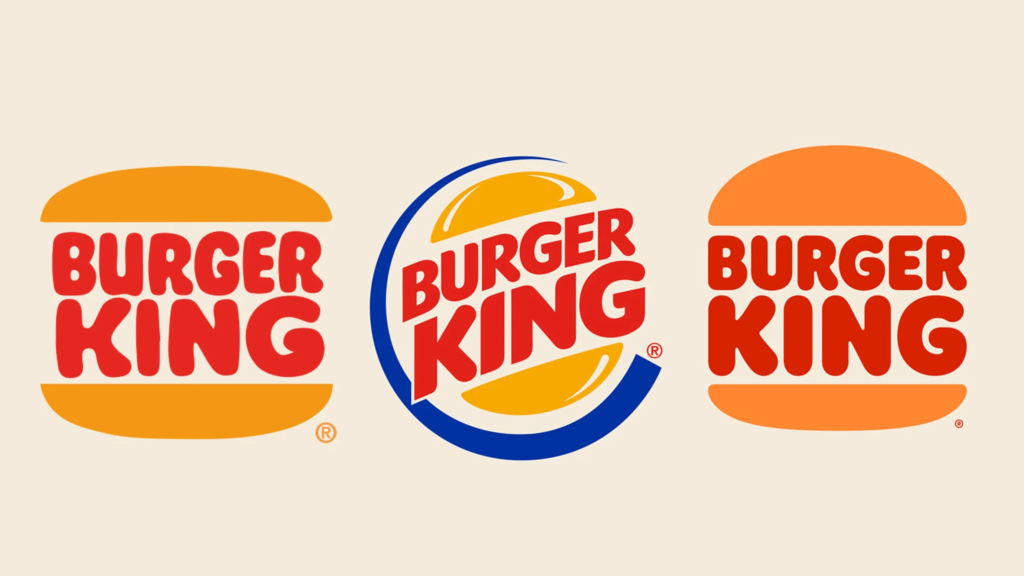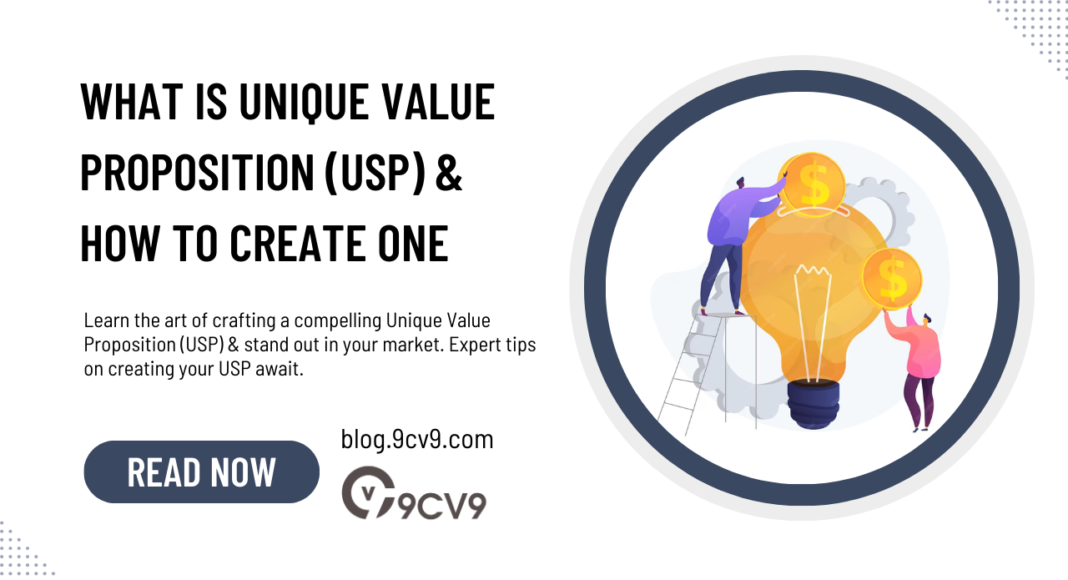Key Takeaways
- Define Your Difference: Crafting a Unique Value Proposition (USP) begins with identifying what sets your business apart from competitors.
- Speak to Your Audience: Tailor your USP to resonate with the needs and desires of your target market to maximize its effectiveness.
- Evolve for Success: Continuously assess, refine, and adapt your USP over time to stay relevant and maintain your competitive edge in the market.
In the vast and ever-evolving landscape of business, standing out from the crowd is not just a desirable trait; it’s a necessity for survival and success.
This is where the concept of Unique Value Proposition (USP) steps in as your guiding beacon, illuminating the path towards differentiation and competitive advantage in your industry.
In this comprehensive guide, we delve deep into the essence of USP, demystifying its significance and unveiling the strategies to craft one that resonates with your audience and propels your business to new heights.

Whether you’re a seasoned entrepreneur or a budding startup, understanding and mastering the art of USP creation can be the differentiating factor between obscurity and prominence in your market.
But first, let’s strip away the jargon and get to the heart of the matter: What exactly is a Unique Value Proposition?
At its core, a Unique Value Proposition encapsulates the essence of what sets your business apart from competitors in the eyes of your target audience.
It’s the distilled promise you make to your customers—a promise of unparalleled value, benefits, and solutions that address their needs and desires in ways that others simply cannot replicate.
Imagine your USP as the magnetic force that draws customers to your brand amidst a sea of options, compelling them to choose you over alternatives.
It’s not merely a slogan or a catchy tagline; rather, it’s the foundation upon which your entire marketing strategy is built—a strategic blueprint that informs every aspect of your messaging, product development, and customer interactions.
In a world inundated with endless choices and fleeting attention spans, having a strong and compelling USP is non-negotiable.
It’s your ticket to cutting through the noise, capturing attention, and fostering lasting relationships with your audience.
But here’s the million-dollar question: How do you create a Unique Value Proposition that truly resonates and leaves a lasting impression?
Fear not, for this guide is your roadmap to USP mastery.
We’ll walk you through the essential components of a robust USP, unravel the secrets of effective USP development, and provide you with actionable insights and real-world examples to inspire and guide your journey.
Whether you’re a brick-and-mortar retailer, an e-commerce giant, a tech startup, or a service-based business, the principles of USP creation are universally applicable.
By the time you reach the end of this guide, you’ll not only understand the power of USP but also possess the tools and knowledge to craft one that elevates your brand above the competition.
So, dear reader, prepare to embark on a transformative journey—one that promises to revolutionize your approach to marketing, redefine your brand identity, and ultimately propel your business towards unprecedented success. The world of Unique Value Propositions awaits, and the possibilities are limitless.
Before we venture further into this article, we like to share who we are and what we do.
About 9cv9
9cv9 is a business tech startup based in Singapore and Asia, with a strong presence all over the world.
With over eight years of startup and business experience, and being highly involved in connecting with thousands of companies and startups, the 9cv9 team has listed some important learning points in this overview of What is Unique Value Proposition (USP) & How to Create One.
If your company needs recruitment and headhunting services to hire top-quality employees, you can use 9cv9 headhunting and recruitment services to hire top talents and candidates. Find out more here, or send over an email to [email protected].
Or just post 1 free job posting here at 9cv9 Hiring Portal in under 10 minutes.
What is Unique Value Proposition (USP) & How to Create One
- Understanding Unique Value Proposition (USP)
- Components of a Strong USP
- How to Create a Unique Value Proposition
- Implementing Your USP
- Evolving Your USP Over Time
1. Understanding Unique Value Proposition (USP)
In this section, we’ll delve deep into the concept of Unique Value Proposition (USP), exploring its significance in business, defining its key components, and providing real-world examples to illustrate its impact.
What is a Unique Value Proposition (USP)?
- Definition: A Unique Value Proposition (USP) is the distinct and compelling benefit or advantage that sets a product, service, or brand apart from competitors in the eyes of the target audience.
- Significance: A strong USP is essential for businesses to differentiate themselves in crowded markets, attract and retain customers, and ultimately drive revenue and growth.
Components of a Strong USP
- Clarity and Specificity:
- A compelling USP should clearly articulate the unique benefit or solution offered by the product or service.
- Example: FedEx’s USP, “When it absolutely, positively has to be there overnight,” succinctly communicates the company’s commitment to fast and reliable delivery.
- Relevance to Target Audience:
- A successful USP resonates with the needs, desires, and pain points of the target market.
- Example: Airbnb’s USP, “Belong anywhere,” appeals to travelers seeking authentic and immersive experiences, rather than traditional hotel accommodations.
- Differentiation from Competitors:
- The USP should highlight what sets the product or service apart from alternatives in the market.
- Example: Apple’s USP, “Think different,” positions the brand as innovative and unconventional compared to its competitors.

Real-world Examples of Effective USPs
- Apple:
- USP: “Think different”
- Apple’s USP emphasizes innovation, design excellence, and a commitment to challenging the status quo, resonating with customers who value creativity and individuality.
- Nike:
- USP: “Just do it”
- Nike’s USP embodies a spirit of determination, empowerment, and athleticism, inspiring customers to pursue their goals and overcome obstacles.
- Amazon:
- USP: “Earth’s most customer-centric company”
- Amazon’s USP focuses on customer satisfaction, convenience, and a wide selection of products, establishing the company as a trusted and reliable online retailer.
Impact of USP on Business Success
- Competitive Advantage: A compelling USP gives businesses a competitive edge by differentiating them from competitors and attracting customers.
- Brand Loyalty: A strong USP fosters brand loyalty and customer retention by creating emotional connections and delivering consistent value.
- Revenue Growth: A well-executed USP can drive sales and revenue growth by attracting new customers and increasing customer lifetime value.
Understanding the essence of Unique Value Proposition (USP) is crucial for businesses aiming to thrive in competitive markets.
By crafting a clear, relevant, and differentiated USP, companies can effectively communicate their value proposition to customers, establish a strong brand identity, and drive long-term success.
2. Components of a Strong USP
Crafting a robust Unique Value Proposition (USP) requires careful consideration of several key components.
In this section, we’ll explore the essential elements that contribute to the effectiveness of a USP, along with real-world examples to illustrate their impact.
1. Clarity and Specificity
- Clear Articulation: A strong USP should clearly communicate the unique benefit or solution offered by the product or service.
- Example: FedEx’s USP, “When it absolutely, positively has to be there overnight,” effectively conveys the company’s commitment to fast and reliable delivery services.
- Specificity: The USP should be specific and tangible, avoiding vague or generic statements.
- Example: Domino’s Pizza USP, “You get fresh, hot pizza delivered to your door in 30 minutes or less—or it’s free,” highlights the specific benefit of fast delivery, setting it apart from competitors.

2. Relevance to Target Audience
- Understanding Customer Needs: A successful USP resonates with the needs, desires, and pain points of the target market.
- Example: Dollar Shave Club’s USP, “Shave Time. Shave Money,” addresses the common frustration of overpriced razors and simplifies the shaving experience for budget-conscious consumers.
- Tailored Messaging: The USP should be tailored to appeal to the emotions and motivations of the target audience.
- Example: Coca-Cola’s USP, “Taste the Feeling,” focuses on the emotional experience of enjoying a Coca-Cola beverage, tapping into consumers’ desire for happiness and connection.
3. Differentiation from Competitors
- Unique Selling Point: The USP should highlight what sets the product or service apart from alternatives in the market.
- Example: Airbnb’s USP, “Belong anywhere,” emphasizes the unique experience of staying in a local home or apartment, distinguishing it from traditional hotel accommodations.
- Value Proposition Comparison: Comparing the USP to competitors’ offerings can help identify areas of differentiation.
- Example: Burger King’s USP, “Have it your way,” positions the brand as customizable and customer-centric, contrasting with the standardized menu offerings of fast-food competitors.
4. Consistency Across Brand Touchpoints
- Integration with Brand Identity: The USP should align with the brand’s overall identity, values, and messaging.
- Example: Patagonia’s USP, “Build the best product, cause no unnecessary harm, use business to inspire and implement solutions to the environmental crisis,” reflects the company’s commitment to sustainability and ethical business practices.
- Communication Channels: Consistently communicating the USP across various marketing channels reinforces brand messaging and enhances brand recall.
- Example: Apple’s USP, “Think different,” is consistently integrated into Apple’s advertising campaigns, product packaging, and retail store experiences, reinforcing the brand’s identity as innovative and unconventional.
The components outlined above are essential for crafting a strong and effective Unique Value Proposition (USP) that resonates with your target audience and sets your business apart from competitors.
By ensuring clarity, relevance, differentiation, and consistency in your USP, you can effectively communicate your brand’s unique value proposition and build meaningful connections with customers.
In the following sections, we’ll explore practical strategies for developing and refining your USP to maximize its impact on your business success.
3. How to Create a Unique Value Proposition
Crafting a compelling Unique Value Proposition (USP) is a strategic process that requires careful analysis, creativity, and alignment with your target audience’s needs and preferences.
In this section, we’ll explore actionable steps to help you develop a USP that sets your business apart and resonates with your customers.
1. Research Your Market and Audience
- Understand Customer Pain Points: Conduct market research to identify the challenges, needs, and preferences of your target audience.
- Example: Survey existing customers or conduct focus groups to gather insights into what they value most in a product or service.
- Analyze Competitors: Evaluate the USPs of your competitors to identify gaps in the market and opportunities for differentiation.
- Example: Study the messaging and offerings of competing brands in your industry to determine how you can position your business uniquely.
2. Define Your Unique Offering
- Identify Core Strengths: Determine what sets your business apart from competitors and forms the foundation of your USP.
- Example: If your business offers personalized customer service or innovative technology solutions, leverage these strengths to create a compelling USP.
- Focus on Benefits: Highlight the specific benefits or solutions your product or service provides to address customer pain points.
- Example: If your product helps customers save time or money, emphasize these benefits in your USP to appeal to their needs and desires.
3. Articulate Your USP Effectively
- Craft a Clear Statement: Develop a concise and memorable statement that communicates your unique value proposition in a compelling way.
- Example: Google’s USP, “Organize the world’s information and make it universally accessible and useful,” succinctly captures the company’s mission and value proposition.
- Emphasize Differentiation: Clearly communicate what sets your business apart from competitors and why customers should choose you over alternatives.
- Example: Slack’s USP, “Where work happens,” highlights the platform’s focus on collaboration and productivity, distinguishing it from other messaging tools.

4. Test and Refine Your USP
- Gather Feedback: Test your USP with focus groups, surveys, or A/B testing to gauge its effectiveness and resonance with your target audience.
- Example: Present different versions of your USP to a sample of customers and gather feedback on which resonates most strongly with them.
- Iterate Based on Results: Use the insights gathered from testing to refine and iterate on your USP until it effectively communicates your unique value proposition.
- Example: If feedback indicates that your USP is unclear or doesn’t resonate with customers, make adjustments to better align with their needs and preferences.
5. Tips and Best Practices
- Be Authentic: Ensure that your USP reflects the genuine strengths and values of your business, rather than attempting to emulate competitors.
- Keep It Simple: Aim for clarity and simplicity in your USP to make it easily understandable and memorable for customers.
- Stay Relevant: Regularly review and update your USP to reflect changes in the market, customer preferences, or your business offerings.
Creating a Unique Value Proposition (USP) that effectively communicates your business’s unique value and resonates with your target audience is a critical step in building a strong brand identity and driving customer engagement.
By following the steps outlined above and leveraging best practices, you can develop a compelling USP that sets your business apart from competitors and establishes a meaningful connection with customers.
In the following sections, we’ll explore strategies for implementing and refining your USP to maximize its impact on your overall marketing strategy and business success.
4. Implementing Your USP
Implementing your Unique Value Proposition (USP) effectively across all aspects of your business is crucial for building brand awareness, attracting customers, and driving business success.
In this section, we’ll explore actionable strategies for integrating your USP into your marketing efforts, customer interactions, and overall business operations.
1. Integration Across Marketing Channels
- Website: Feature your USP prominently on your website’s homepage and landing pages to immediately communicate your unique value proposition to visitors.
- Example: Airbnb prominently displays its USP, “Belong anywhere,” on its homepage, reinforcing the brand’s commitment to offering unique and authentic travel experiences.
- Advertising Campaigns: Incorporate your USP into your advertising copy, slogans, and visuals to reinforce your brand messaging and differentiate your offerings.
- Example: Coca-Cola consistently integrates its USP, “Taste the Feeling,” into its advertising campaigns, evoking emotions and associations with its iconic brand.
- Social Media: Share content that highlights your USP on social media platforms to engage with your audience and reinforce your brand identity.
- Example: Nike frequently shares motivational content that aligns with its USP, “Just do it,” on social media platforms, inspiring customers to pursue their goals and aspirations.

2. Training Your Team
- Employee Education: Ensure that your employees understand your USP and how it differentiates your business from competitors.
- Example: Zappos invests in extensive training for its customer service representatives to embody the company’s USP, “Delivering happiness,” in every customer interaction.
- Consistent Messaging: Empower your team to communicate your USP consistently across all customer touchpoints, from sales calls to customer support interactions.
- Example: Apple Store employees are trained to embody the company’s USP, “Think different,” by providing personalized and innovative solutions to customers in-store.
3. Product and Service Offerings
- Align with USP: Ensure that your products or services deliver on the promise of your USP and provide tangible value to your customers.
- Example: Tesla’s electric vehicles align with the company’s USP, “Accelerating the world’s transition to sustainable energy,” by offering innovative and environmentally-friendly transportation solutions.
- Innovation and Improvement: Continuously innovate and improve your offerings to maintain alignment with your USP and stay ahead of competitors.
- Example: Google consistently updates its products and services to align with its USP, “Organize the world’s information and make it universally accessible and useful,” by introducing new features and functionalities that improve user experience.
4. Monitoring and Measurement
- Key Performance Indicators (KPIs): Establish KPIs to track the effectiveness of your USP implementation, such as brand awareness, customer acquisition, and customer satisfaction.
- Example: Amazon monitors metrics such as customer reviews, repeat purchases, and net promoter score (NPS) to evaluate the impact of its USP, “Earth’s most customer-centric company,” on customer satisfaction and loyalty.
- Feedback and Adjustment: Solicit feedback from customers and stakeholders to identify areas for improvement and adjustment in your USP implementation.
- Example: Netflix regularly collects feedback from subscribers to refine its recommendation algorithms and personalized content offerings, aligning with its USP, “Watch what you want, when you want.”
Implementing your Unique Value Proposition (USP) effectively requires a comprehensive approach that integrates your USP into all aspects of your business operations, from marketing and customer interactions to product development and measurement.
By aligning your team, offerings, and messaging with your USP, you can reinforce your brand identity, attract customers, and drive business growth.
In the following sections, we’ll explore strategies for evolving and optimizing your USP over time to adapt to changing market conditions and customer preferences.
5. Evolving Your USP Over Time
As markets evolve and consumer preferences shift, it’s essential for businesses to adapt and evolve their Unique Value Proposition (USP) to remain relevant and competitive.
In this section, we’ll explore strategies for assessing, refining, and updating your USP to align with changing market dynamics and customer needs.
1. Embrace Adaptability
- Market Trends: Stay informed about emerging market trends, technological advancements, and industry disruptions that may impact your business.
- Example: The rise of remote work during the COVID-19 pandemic prompted companies like Zoom to adapt their USP to focus on enabling virtual collaboration and communication.
- Consumer Insights: Continuously gather feedback from customers through surveys, reviews, and social media to understand their evolving needs and preferences.
- Example: Spotify evolved its USP from simply offering music streaming to providing personalized playlists and recommendations based on user preferences and listening habits.
2. Assess and Analyze
- Competitive Landscape: Monitor competitors’ USPs and market positioning to identify areas where your business can differentiate itself.
- Example: Burger King famously evolved its USP from “Have it your way” to “Be your way,” emphasizing individuality and self-expression in response to changing consumer values.
- Internal Evaluation: Evaluate your business’s strengths, weaknesses, opportunities, and threats (SWOT analysis) to identify areas for improvement and differentiation.
- Example: Apple regularly conducts internal assessments to identify emerging technologies and market opportunities that can inform updates to its USP.

3. Experiment and Innovate
- Pilot Programs: Test new product features, services, or marketing initiatives that align with potential updates to your USP.
- Example: Airbnb launched “Experiences” as a pilot program to provide travelers with unique local activities and adventures, aligning with its evolving USP of offering more than just accommodations.
- Feedback Loops: Solicit feedback from customers and stakeholders to gauge the effectiveness and reception of experimental changes to your USP.
- Example: Amazon’s “Prime” subscription service initially offered free two-day shipping but has since evolved to include additional benefits such as streaming video and exclusive discounts based on customer feedback and preferences.
4. Iterate and Refine
- Data-Driven Decision Making: Use data analytics and customer insights to inform decisions about refining and optimizing your USP.
- Example: Netflix continuously analyzes viewer data and engagement metrics to refine its content recommendations and enhance its USP of personalized entertainment.
- Agile Approach: Adopt an agile approach to USP refinement, allowing for quick iterations and adjustments based on real-time feedback and market changes.
- Example: Google’s frequent updates to its search algorithms reflect its commitment to providing users with the most relevant and useful information, aligning with its USP of organizing the world’s information.
Evolving your Unique Value Proposition (USP) over time is essential for staying competitive and meeting the evolving needs of your target audience.
By embracing adaptability, assessing market dynamics, experimenting with new initiatives, and iterating based on feedback, businesses can ensure that their USP remains relevant and compelling in an ever-changing landscape.
In the following sections, we’ll explore strategies for effectively communicating and promoting your USP to maximize its impact on brand perception and customer engagement.
Conclusion
Crafting a compelling Unique Value Proposition (USP) is not just a marketing exercise; it’s a strategic imperative for businesses seeking to thrive in competitive markets and forge meaningful connections with their target audience.
Throughout this comprehensive guide, we’ve explored the essence of USP, the essential components of a strong USP, and actionable strategies for creating, implementing, and evolving your USP over time.
From understanding the significance of USP in differentiating your brand to defining your unique offering and articulating it effectively, each step in the USP creation process plays a crucial role in shaping your brand identity and positioning in the market.
Real-world examples from industry leaders such as Apple, Nike, and Amazon have demonstrated the transformative power of a well-crafted USP in driving customer engagement, loyalty, and business growth.
Implementing your USP across all marketing channels, training your team to embody your brand values, and aligning your product offerings with your USP are key steps in bringing your USP to life and maximizing its impact on your business success.
However, the journey doesn’t end there. By embracing adaptability, assessing market trends, experimenting with new initiatives, and iterating based on feedback, businesses can ensure that their USP remains relevant, compelling, and resonant with their target audience over time.
As you embark on your USP creation journey, remember that authenticity, relevance, and consistency are paramount.
Your USP should authentically reflect your brand’s unique strengths, resonate with your target audience’s needs and desires, and remain consistent across all brand touchpoints.
Whether you’re a startup looking to carve out a niche in a crowded market or an established industry leader seeking to stay ahead of the curve, the principles of USP creation are universal and timeless.
In a world where consumers are inundated with choices and bombarded with messages, a strong and compelling USP can be the difference-maker that sets your business apart, captivates your audience, and propels your brand towards sustained success.
By embracing the principles and strategies outlined in this guide, you have the tools and knowledge to craft a USP that not only differentiates your brand but also resonates deeply with your customers, forging lasting relationships and driving business growth for years to come.
So, seize this opportunity to unlock the power of your Unique Value Proposition, and let it be the guiding light that illuminates your path to success in the dynamic and ever-evolving landscape of business. The possibilities are limitless, and the journey is yours to embark upon.
If your company needs HR, hiring, or corporate services, you can use 9cv9 hiring and recruitment services. Book a consultation slot here, or send over an email to [email protected].
If you find this article useful, why not share it with your hiring manager and C-level suite friends and also leave a nice comment below?
We, at the 9cv9 Research Team, strive to bring the latest and most meaningful data, guides, and statistics to your doorstep.
To get access to top-quality guides, click over to 9cv9 Blog.
People Also Ask
What is a unique value proposition?
A Unique Value Proposition (USP) is a concise statement that communicates the distinct benefits or advantages of a product or service, highlighting why it is uniquely valuable to customers compared to alternatives in the market.
What are examples of value propositions?
Examples of value propositions include FedEx’s “When it absolutely, positively has to be there overnight,” Apple’s “Think different,” and Airbnb’s “Belong anywhere.” These statements succinctly communicate the unique benefits or solutions offered by each brand, setting them apart from competitors.
What is an example of UVP and USP?
An example of a Unique Value Proposition (UVP) is Tesla’s “Accelerating the world’s transition to sustainable energy,” while an example of a Unique Selling Proposition (USP) is Domino’s Pizza’s “You get fresh, hot pizza delivered to your door in 30 minutes or less—or it’s free.”































![Writing A Good CV [6 Tips To Improve Your CV] 6 Tips To Improve Your CV](https://blog.9cv9.com/wp-content/uploads/2020/06/2020-06-02-2-100x70.png)


